
Chris Parker and I arose at 6:30 AM and went to McDonald's for breakfast while Anton Lazzaro slept in. Chris would pick him up as they were going to be chasing my train towards Glenwood later this morning. We drove to the Amtrak station in Midway to pick up Bob Riskie and his cousin Dale, but first stopped at the Minnesota Commercial Railroad shops.

Motive power was at rest this Sunday morning in the Twin Cities.

Minnesota Commercial C-424 314, ex. Wisconsin Central 314, nee Green Bay and Western 314 built by American Locomotive Company in 1965.

Minnesota Commercial B23-7 1971, nee Conrail 1971 built by General Electric in 1979.
We drove over to Amtrak where Bob had returned his rental car and I waited by the car for him and Dale while Chris photographed the Empire Builder for his first time. We made our way to Shoreham Yard but stopped at a petrol station for snacks and drinks then drove the rest of the way to Shoreham Yard.
Canadian Pacific 2816 Shoreham to Thief River Falls 9/16/2007This two-day trip, part of the Friends of 261 and Canadian Pacific 2816 International Steam Excursion featured Canadian Pacific 4-6-4 2816. Built by the Montreal Locomotive Works in December 1930, it is the only non-streamlined Hudson to be preserved. The locomotive was primarily used in pulling passenger trains in revenue service for thirty years before it was retired in May 1960. In 1963, it was sold to F. Nelson Blount, who added it to his Steamtown, U.S.A. collection in Bellows Falls, Vermont. After becoming surplus in the collection by the National Park Service, 2816 was reacquired by the Canadian Pacific in 1998 and crews from BC Rail were hired to extensively restore it to operating condition.
Revenue serviceIt was first assigned to premier passenger service between Winnipeg and Fort William, Ontario. Following the introduction of semi-streamlined Royal Hudson locomotives in 1937, it was re-assigned to secondary passenger service between Windsor, Ontario and Quebec City and during the 1950's, it pulled commuter trains between Montreal and Rigaud, Quebec. In 1957, 2816 received a minor overhaul, with its tender being replaced with one from Royal Hudson 2822. The locomotive was retired from revenue service on May 26, 1960, after accumulating 2,046,000 miles and was subsequently used briefly as a stationary boiler at the St. Luc yards in Montreal.
Steamtown ownershipIn the early 1960's, F. Nelson Blount wanted to expand his Steamtown, U.S.A. collection and one of the locomotives he initially wanted to preserve was a 4-6-4 from the New York Central Railroad. Since all NYC 4-6-4s were scrapped by that time, Blount improvised by purchasing 2816 from the Canadian Pacific in December 1963. The locomotive was removed from the scrap lines of Angus, Ontario, and it was put on static display at Steamtown's first location in Bellows Falls, Vermont. During No. 2816's time on static display, the locomotive deteriorated from the outdoor elements and its condition worsened for several years. In the winter of 1983-1984, it was moved along with the rest of the collection to Scranton, Pennsylvania, where Steamtown was later reorganized as Steamtown National Historic Site under the ownership of the National Park Service. Following the reorganization, 2816 was deemed surplus in the collection and Steamtown wanted to dispose of it.
RestorationDuring the mid to late 1990's, the Canadian Pacific Railway's then-president and CEO, Robert Ritchie, reorganized the company and established the "Royal Canadian Pacific" excursion train to honour the railway's history and he sought for Canadian Pacific to operate their own steam excursion program. In 1998, the Canadian Pacific purchased 2816 from Steamtown and in exchange, the railway would move some equipment to Scranton. Canadian Pacific had heard of its availability via phone calls from BC Rail, who had been operating Canadian Pacific Royal Hudson 2860 as part of their own excursion program; the 2860 crews had been looking for replacement parts for the Royal Hudson and were offered to buy the entire locomotive by Steamtown.
A team of inspectors performed a preliminary inspection on 2816, and they pronounced that it was in good condition. In September 1998, the locomotive was coupled in a special consist led by Canadian Pacific GP38-2 3069, FP7 1400 and St. Lawrence and Hudson GP9u 8216, and it was ferried from Scranton to Montreal via Binghamton and Albany, New York, before travelling cross-country to the BC Rail steam workshop in North Vancouver, British Columbia. Canadian Pacific contracted the BC Rail steam shop crew, led by Al Broadfoot, to disassemble the steam engine and evaluate its condition; if it were salvageable, then they would restore it to operating condition, but if it were deteriorated beyond salvaging, then they would give it a cosmetic restoration for static display purposes.
When 2816 was disassembled, it was revealed that it was mechanically worn out, despite the preliminary inspectors having stated otherwise, but Rob Ritchie decided to approve a complete rebuild of the locomotive, regardless. Broadfoot and his team were able to obtain multiple plans and vital information about Canadian Pacific H1b class locomotives, including a collection of over 800 technical drawings provided by the Canada Science and Technology Museum and they used them as references for the project. Hundreds of replacement parts had to be fabricated by contractors in Vancouver, such as the cab, the running boards, the rod brasses, the superheater manifold, among others.
Contractors in the United States were hired to overhaul other major parts of 2816; the driving wheels were shipped to the Tennessee Valley Railroad Museum in Chattanooga, Tennessee and the boiler was shipped to Doyle McCormack and his crews in Portland, Oregon. 2816's firebox was converted from coal to oil firing and the tender received dual water intakes with Canadian and American threads. Canadian Pacific gained so much faith in the project that on April 19, 2000, the railway announced that it would be scheduled to return to service for their steam program by September of that year, but the deadline was pushed back, due to further challenges encountered in the restoration process. The project spanned more than two years and incurred costs between $3 million and $3.5 million.
Canadian Pacific excursion service and temporary hiatusOn August 15, 2001, 2816 passed its federal boiler inspection, and the following day, the locomotive was fired up for the first time in forty years, performing a series of test runs over three days on Canadian Pacific's Cascade Subdivision between Coquitlam and Mission. From September 19 to 23, with Al Broadfoot as the fireman and with Bill Stettler and Doyle McCormack taking turns as the engineer, 2816 pulled its first official inaugural excursion out of Port Moody, toured some of the Canadian Pacific mainlines for 672 miles over five days and then it stopped at Canadian Pacific's headquarters in Calgary, Alberta. The locomotive began pulling additional public relations excursions for the Canadian Pacific Railway, and it quickly received the name "The Empress".
On May 16, 2002, the locomotive pulled two excursions for the West Coast Express. Between May 24 and July 8, 2003, 2816 toured the Canadian Pacific between Alberta and Ontario, and the purpose of the tour was to spread further public awareness of Canadian Pacific and to raise money for the children's "Breakfast for Learning" program. On September 27, 2816 visited the Kamloops Heritage Railway and took part in a doubleheader excursion with Canadian National 2-8-0 2141. In May 2004, 2816 pulled the Royal Canadian Pacific consist while performing a 3,000-mile tour across the Canadian Pacific between Vancouver and Montreal, and it marked the first time in fifty years that a single steam locomotive pulled a cross-country passenger train in Canada, but it was assisted by three Canadian Pacific heritage diesels.
In early June 2004, the Empress was ferried behind a Soo Line SD60 over the CSX mainline between Buffalo, New York and Chicago, Illinois, hen it travelled to the Twin Cities area in Minnesota to participate in the Grand Excursion 2004 event, which celebrated the 150th anniversary of the Chicago and Rock Island Railroad's celebration train of 1854. 2816 pulled multiple public excursions for the event between the Twin Cities and the Quad Cities area in Iowa, using passenger coaches owned by Friends of the 261 and the last train took place on July 3; a doubleheader with Milwaukee Road 261 from St. Paul to La Crescent and return. 2816 returned from Minnesota to Calgary with a charity train later that same month.

I walked down towards the engine after storing my bag on the train and as usual, a Canadian Pacific Railway crew was working on the engine.

Canadian Pacific 4-6-4 2816 on the point of our train followed by water car 35508, Canadian Pacific GP38-2 3094, tool car Canadian Pacific 29114, generator car Canadian Pacific 96, sleeper Canadian Pacific 110, coaches Canadian Pacific 101 "Dominion", Canadian Pacific 102 "Ernest "Smoky" Smith", NSR baggage 9107 (in Canadian Pacific colours), PPCX 5534 "HR Bowen", NSR 31 "Minnesota River", NSR 3103 "Wisconsin Valley" PPCX 800757, Milwaukee Road "Super Dome" PPCX 800862 and Skytop observation "Cedar Rapids" PPCX 800040.
I settled in for the trip and waited for departure time talking with friends who were here to ride the former Soo Line mainline from Glenwood to Winnipeg. At 9:03 AM, Canadian Pacific 2816 started pulling forward as we began the trip to Thief River Falls.


The train curved out of the loading area.
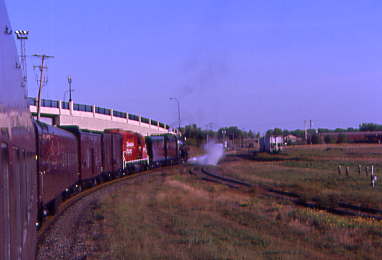

We were a very colourful train for this unique excursion. Canadian Pacific 2816 slowly pulled us out of Shoreham Yard as passengers looked for friends who would be chasing the train. I knew we would be seeing Chris and Anton somewhereplace west of Plymouth later this morning.

At University, we turned west onto the Paynesville Subdivision for the trip out to Glenwood, as I did last weekend.

Crossing over the throat of BNSF's Northtown Yard.

On the Mississippi River bridge.

You could see downstream towards downtown Minneapolis.

Looking upstream. We went through Humboldt Yard then crossed BNSF's Monticello Subdivision before passing through Minneapolis, Northfield and Southern Junction and running through the communities of Hamel, Medina and Loretto, where Canadian Pacific 8780 East was in the siding.

Canadian Pacific 2816 took one of the many slight curves on this piece of railroad.


Just before Rockford, our train crossed the Crow River and another Canadian Pacific freight was in the siding at Dickinson before we rolled through Buffalo.

At Buffalo, Milepost 36.5, we passed the SOO Line station built in 1954. Since we had not seen Chris Parker and Anton, I asked Bob to call him and we learnt that they were just west of Lorreto. I said that they could still catch us but to get a move on and watch the small towns for local police.
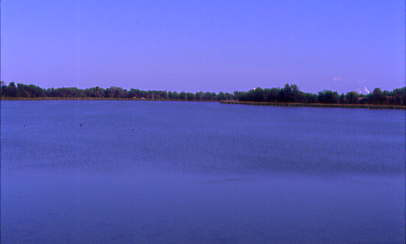
Maple Lake, at Milepost 44.6, was passed through next.
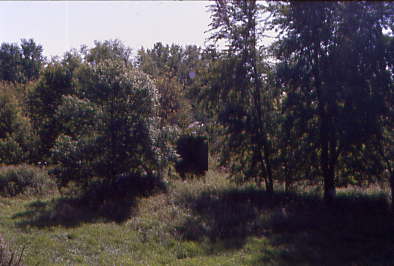
A freight car in the weeds and trees at Annandale is part of the collection of Don Lind, known as the Minnesota & Western Railroad Museum.

We had yellow signal as we approached South Haven, Milepost 55.7, where our train was serviced after we met Canadian Pacific 9828 East. This delay allowed Chris and Anton to get ahead of us and I spotted them as we departed.
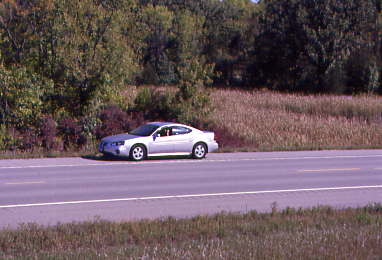
Chris Parker and Anton drove by before they stopped for another picture.

Chris videotaping our train while I photographed him.

Crossig another trestle.

Rounding a curve.

The train took the big long curve before Eden Valley.

Yet another slight curve.
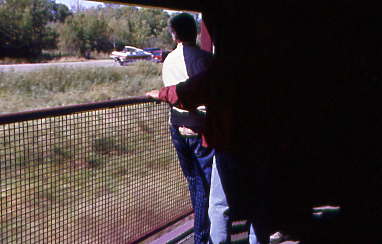
Rob Riskie was enjoying the open door of our baggage car.

Curving into Paynesville at Milepost 82.5.

Canadian Pacific 9717 West at Paynesville.

Our train curved towards Regal and we proceeded west through Belgrade, Brooten and Sedan before reaching the yard at Glenwood.

Canadian Pacific 8827 East was waiting for a crew.

We arrived at the SOO Line Glenwood station, built in 1902, for a thirty-minute servicing stop and I detrained.

Canadian Pacific 9605 East was waiting a crew.

Our steam engine taking water.

Canadian Pacific 2816 being serviced by the wonderful Canadian Pacific Railway crew.

I walked over to the street side view of the station then reboarded.

Canadian Pacific 9675 East and Soo Line GP38-2 4415.

Two Canadian Pacific AC4400CW locomotives. We slowly departed at 1:55 PM en route to Thief River Falls.

At the west end of the Glenwood Yard, we passed Canadian Pacific 8523 West.